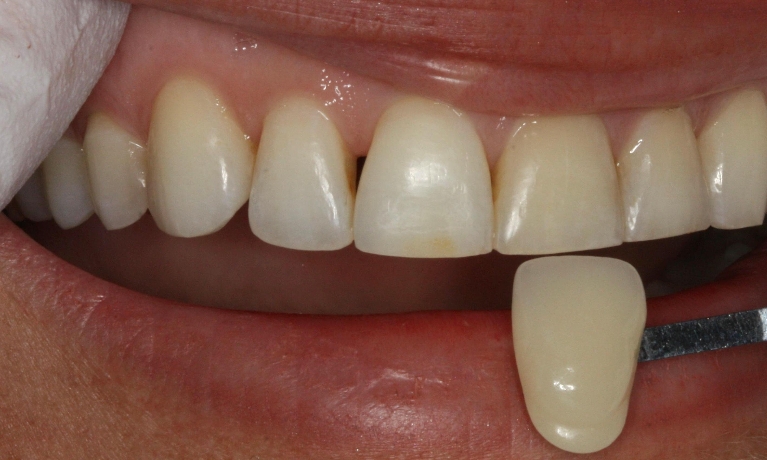
The diastema is the space or separation between two teeth that occurs, especially, in the central incisors of the upper jaw (the vanes).
It is a fairly common problem in children when they still have milk teeth. Moreover, 97% of children up to 5 years and up to 50% of those between 6 and 8 years old have diastema. However, the situation improves once the permanent teeth erupt, such that only 2 to 7% of the individuals with this anomaly are present.
Do you know what are the causes of diastema?
Causes of the diastema
There are numerous causes that cause diastema, both in the upper central incisors and in the rest of the teeth:
- A disproportion in the size of the teeth: Its technical name is microdontia and it occurs when the teeth are smaller than usual. For this reason, the teeth do not contact each other.
- The lack of any dental piece: A diastema occurs when a patient suffers from dental agenesis or has lost a tooth.
- The upper dental arch is greater than the lower one: By having a larger arch and yet the same number of teeth, they tend to remain separate (in the opposite case of dental crowding ).
- Upper labial frenum: When the upper frenulum is inserted in a lower position than usual, it tends to cause diastema in the central incisors.
- Suction habits: A baby or child with a bad habit of suction (thumb, bottle …) can alter the development of your maxilla causing malocclusion and separation of the incisors.
And, what are solutions that help us close and correct the separated teeth?
Treatment to correct diastemas
There are different treatments aimed at fixing diastemas. It will be the task of the dentist to carry out an exhaustive study of each case, to determine which is the best treatment to solve the separated teeth.
- Orthodontic treatment: The orthodontic treatment to correct diastemas is the most common method because it favors the gradual movement of the teeth to close gaps. In addition, thanks to aesthetic orthodontic systems such as Invisalign, it is not necessary to wear braces during the period necessary to close the spaces. It is worth bearing in mind that diastemas corrected with orthodontics tend to recur (to return to their initial position), which requires a permanent retention system.
- Treatment with dental veneers: Thanks to aesthetic veneers we can close a diastema without having to resort to orthodontics. Placing the thin sheets that will cover the tooth of the color and size suitable to homogenize all the teeth, the patient will not only correct the interdental space, but also a perfect smile.
- Dental implants: When the space between teeth is produced by agenesis or by the lack of any dental piece, it is advisable to resort to dental implants, thanks to which the patient will manage to restore his smile with a perfect integration of the tissues and a final result identical to that of natural teeth.
- Crowns and bridges: In a similar way to dental implants, crowns and bridges allow covering the lack of one or several teeth, obtaining the shape, size and strength of any other natural tooth.
- Frenectomy: When the diastema is produced by a labial frenum that is too large, a surgical procedure called a frenectomy is recommended, through which a frenulum cut is made for its subsequent repositioning.
With all available treatment options, the closure of diastemas, usually requires more than one intervention: orthodontics, surgery, prosthesis, periodontics … That is why to achieve the best result and that the diastema does not reappear, it is convenient to perform a diagnosis and integral treatment.
A risky fashion?
At present, and despite the disagreement of many dentists, the diastema has become the latest trend especially in the fashion world . Thus, taking as a stereotype models like Georgia Jagger, actresses like Brigitte Bardot or artists like Madonna, there are many who, not only do not perform a treatment to correct the diastema, but even provoke it. This is the case of the Spanish designer David Delfin, who underwent orthodontic treatment to achieve the infant image that inspires the diastema of the central incisors.
However, this type of fashion can involve certain risks for dental health; gum problems, increased risk of caries (the remains of food are easier to stay in the interdental space), phonation problems and even bite , which can in turn reflect muscle and cervical problems .
That is why from the Dubai Dental Clinic want to emphasize the importance of correcting dental diastemas, since a fashion issue can produce complications in our health that we will regret in the short term.
